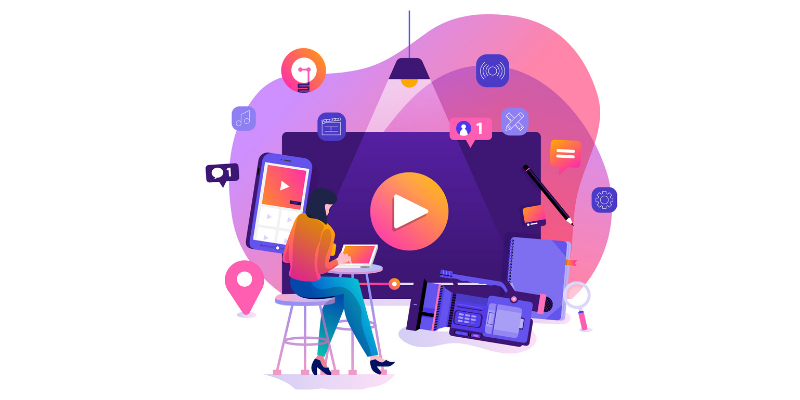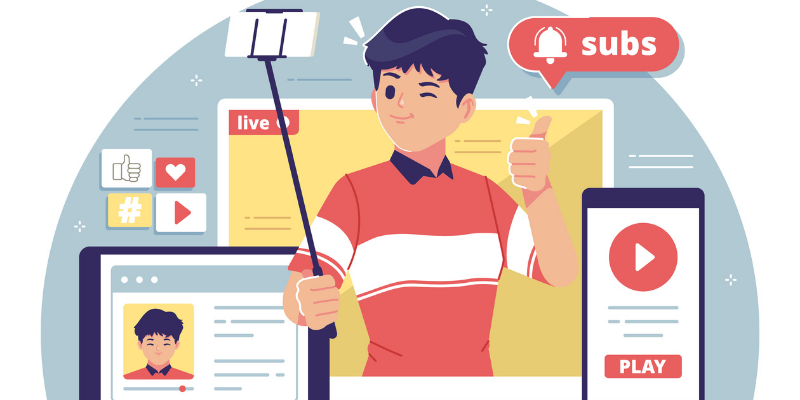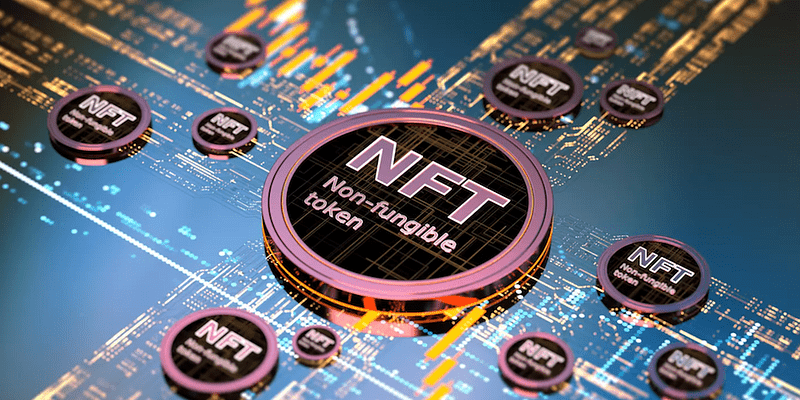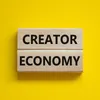If you ever had to turn to YouTube, hunting for recipes of Palak Paneer and Malai Kofta on a random weekend and trying to satisfy those midday cravings, you probably know who I’m talking about. She’s one of the first suggestions that show up with delectable Indian and multicultural recipes. Here is Kabita’s story.
Kabita always enjoyed cooking, but she never thought that she could make a career out of it. Her marriage caused her to shuttle between the UK and India for a few years. While in the UK, she wasn't pleased about the Indian food available and started following recipes online. Something I also did when I was living in Berlin.
When putting up online content wasn’t a very conventional career option, Kabita decided to pursue her passion for cooking and posted her first YouTube video in November 2014. She has never looked back since. Today, over 1,100 videos later, Kabita has garnered a subscriber base of more than 11.8 million on YouTube and 876,000 followers on Instagram.
There are many such success stories like hers, and the creator economy is booming globally.
Becoming an astronaut (including me) has been a sought-after ambition for Generation X. Fast forward to two decades later, a study by The Sun reveals that 75 percent of Gen Z and millennials want to be YouTube stars while only 11 percent want to be astronauts. Such a shift can be attributed to the growing ‘Creator Economy’, which has ‘content’ — the most profitable product of the 21st century — at its centre.
If we draw an analogy from human anatomy, the Creator Economy is the body, and content is its soul.
In the past, production houses dictated content production and decided the audience. However, the rise of social media and engagements through likes, comments, and live enabled the content creators to gain followers in millions and become ‘influencers.’

How did it originate
The creator economy originated from the dynamic needs and behaviours of the audience. The content created by big media and production houses was either too limited or niche and became saturated.
With the advent of interactive and user-generated content, people stopped using the internet simply for information but discovered new potential uses, such as social media, consuming content in various forms.
The growing audience, exponential increase in access to the internet, and user-friendly applications democratised its access among the masses. Web 2.0 offered numerous opportunities for people to express themselves online, and the Creator Economy grew from this.
Platforms like YouTube, Orkut, Facebook, etc., later on, Instagram and TikTok acted as a medium to serve specifically viral content. It led to a massive inflow of creators from Tier II and III cities in the economy.
Having built an established audience, the creators were further supplemented with sponsored content from brands and monetisation tools from these platforms.
Once creators mobilised across the internet on platforms like Instagram, Twitter, Snapchat, Spotify, Twitch, Onlyfans, Moj, etc., with no particular dependence on a specific platform, they port their community and fandom to unlock multiple revenue streams.
This can be through direct funding by fans, patronage platforms, or even the setting up of independent businesses as solopreneurs.
What is the Creator Economy?
The creator economy is at the intersection of knowledge and passion, entirely driven by hobbies and interests with viable money-making options.
Creators use platforms like YouTube, Facebook, Discord, Onlyfans, Moj, etc., to earn money through ad revenue shares, sponsorship deals, product placement, paid subscription, merchandise sale, and a lot more.
Major trends
One of the significant trends in this economy is creators are starting to explore multiple monetisation channels. Only 150,000 professional content creators have been able to monetise their services effectively in India.
There's a lot more recent conversation around subscription, direct user payments, patronage, etc. Crypto adds to this trend by allowing users to own digital media.
The constant need to explore alternative income streams has forced creators to be innovative with their content and delivery. Getting out of the conduit of achieving third-party brand business goals first introduced the concept of patronage platforms.
Platforms like Patreon and Cameo have made it easier for creators to facilitate a steady source of income by directly getting paid by fans.
The creator's economy is full of challenges. To succeed fully in the digital age, a creator must produce relevant content that keeps pace with its audience’s needs and personalise it for different consumers.
Exclusivity of content through subscription, early access, exclusive fan interaction solves this to an extent. It has further blended the line between audience and creator, enabling them to build direct relationships, creating micro-economies within the creator space.
Another major trend in this is the rise of blockchain and its finding its way into the creator economy ecosystem. Digital creators can also sell their work directly as Non-Fungible Tokens (NFTs).
The last quarter (Q3, FY 2021-22) saw almost $11 billion worth of NFTs sold, giving NFT marketplaces like Open Sea and Foundation the opportunity to revolutionise the space with their massive platform and allow creators to monetise their NFTs.
A significant benefit of such a system is that content and IP will not be constrained by a third-party platform, such as social media. Additionally, creators give a shared stake in their projects, which goes beyond the simple altruistic engagement of creators with their fans/audience.
In early 2021, Logan Paul, a prominent public figure and YouTube celebrity sold $1 million worth of NFTs in just 30 minutes.
Since the space is still nascent, creators need support from brands and corporations to become early adopters and take advantage of such new tools.

Why is it booming?
There are 5.31 billion unique smartphone users (GSMA Intelligence) globally, and 4 billion of them are active on one social media platform (Statista report, 2022). If we look at India, there are about 600 million smartphones and 700 million internet users (TRAI), making us the second largest in terms of the number of users in the world.
International creators have realised the need to tap into this audience through targeted content. Reaction videos on the Indian film industry, Indian pop music, etc., by foreign channels like Jaby Koay, The Reel Rejects, Tide Pool, among others, have helped them massively increase their subscriber count over a short period.
Indian creators like Tanmay Bhatt, his wit and humour, and his collaboration with Netflix India have further increased the hype around such videos.
The shift in media consumption from traditional forms like TV to digital stimulated the growth of the creator economy. Cheaper internet-enabled India to transition to Web 2.0, further accelerating this.
The pandemic forced artists to rethink monetisation and fan engagement strategies causing them to experiment with their content, indulging in live broadcasts, meme reviews, and so forth.
Influencer marketing
Influencer Marketing is another area that has seen massive growth in recent years. According to Mediakix, the current Total Available Market is $8 billion for influencer marketing, and it’s expected to grow to $15 billion by the end of this year, making it one of the fastest-growing business sectors.
If we look at India, the total revenue from Influencer marketing was close to $120 million in 2021 (The Print), which means there is a vast potential to grow further. Creators as influencers influence the purchasing decision of their fandom, and brands capitalize their reach by offering exclusive discounts for their fans through unique coupons/codes.
What social media platforms are doing for the creator economy?
Creators have recognised the need for developing an audience connection that brands fail to establish and leveraged it to demand more compensation from all stakeholders involved. This was a reminder for social media platforms to compensate their business drivers adequately.
Major media platforms introduced a slew of features: In 2017, Spotify acquired Soundtrap, a music production software developer, and diversified from being the distributor to offering solutions to develop music.
Facebook came up with paid online events, fan subscriptions, in-stream ads, along with a favourable revenue share model for ‘Stars,’ deciding not to take any share in the income till 2023.
Instagram also took multiple steps to catalyse creator economy marketing. In 2021, it came up with tools like creator shops, gated content, and subscriptions during the inaugural creator week. It also launched direct payments to creators with badges that allow viewers to tip creators during live sessions.
In early 2021, Twitter acquired Revue and launched Super Follow to enable monetizing newsletter, pay-to-access tweet feature, and Tips. Tips allow users to make direct payments to the creators.
YouTube was falling behind the rising influence of Reels, TikTok, Moj apps. Realising the need, it launched a $100 million YouTube Shorts Fund (May 2021) to take on the upcoming video apps. The fund enabled creators to get rewarded based on engagement and viewership.

What's next for the creator economy?
Crypto integration is the way forward for this economy in the near future. Indian app Chingari, built on the Solana Blockchain, is joining the crypto race early by adopting a token-based reward system for its users.
In addition to incentivising creators through benefits and increasing monetization tools, some platforms have also attempted to become “all-in-one” destinations- from helping them build an audience, sharing advertising revenue, allowing them to create their product, and offering to have them take ownership of the platform themselves (discovery, creation, and monetisation and growth).
This is vital for building a creator-friendly platform and promoting creator empowerment in an economy that looks at the aligned brand and creator interest long term as the key driving force for future growth in this sphere.
As monetisation models continue to develop, millions of creators and knowledge workers will become microentrepreneurs and dominate the startup space. India's GDP growth and rising consumer spending will benefit these individuals directly.
So maybe the most crucial question to ask now is, is India ready for a single-person unicorn?
Edited by Saheli Sen Gupta





